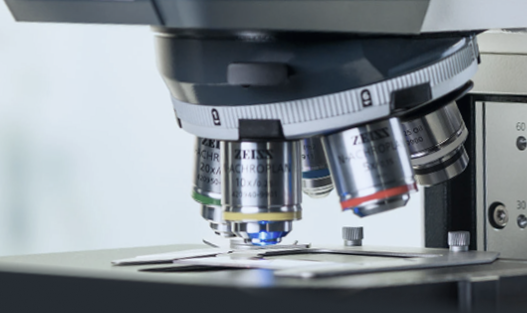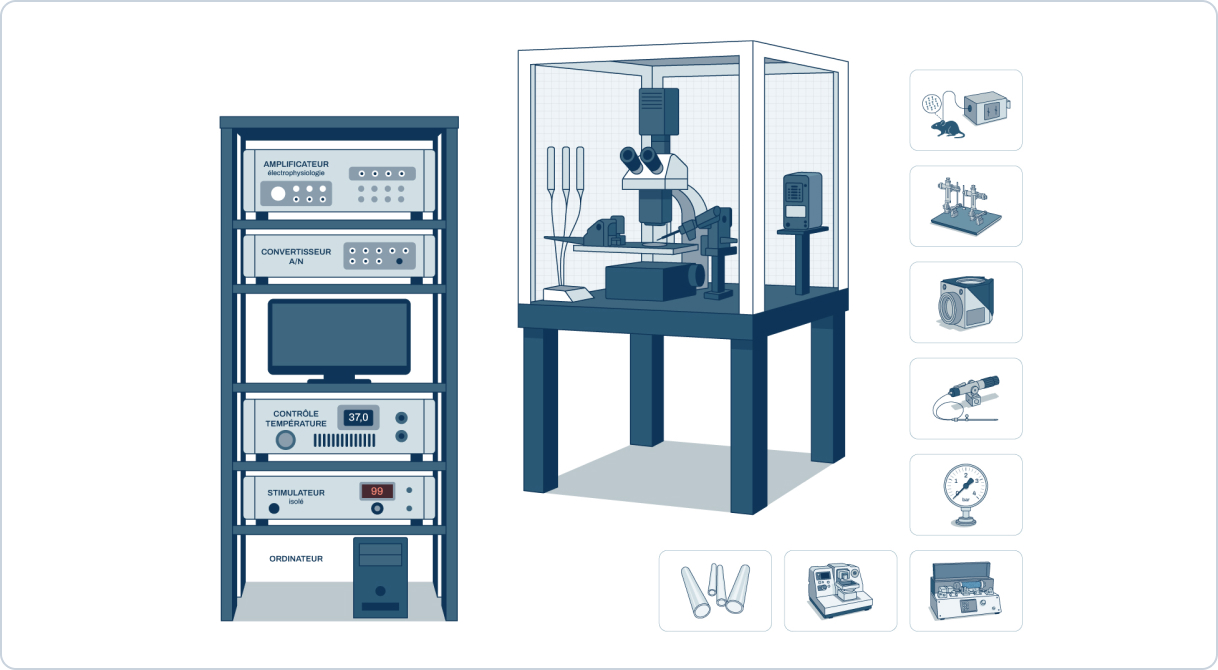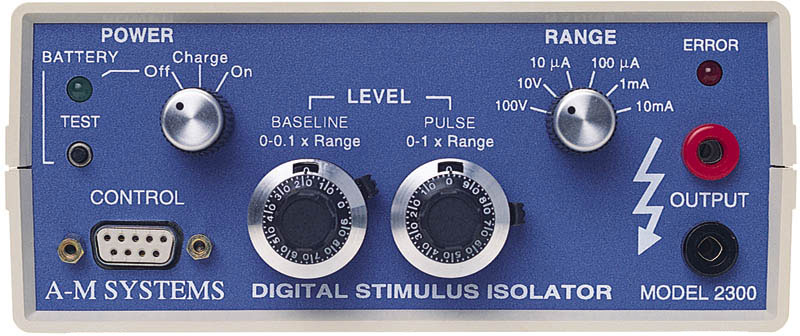Digital Stimulus Isolator Model 2300
The Model 2300 is a digital stimulus isolator offering complete opto-electrical isolation of computer-generated TTL signals, with amplitude control via front-panel potentiometers and rechargeable battery operation for mains-independent use. It delivers single-phase or two-phase square-wave pulses with very low noise.
Features of the Model 2300 Digital Stimulator
- TTL interface for three control lines: On/Off, Pulse/Baseline, Polarity
- Output configurable as constant current or constant voltage, in single-phase or two-phase mode
- Maximum amplitude up to ±50 V or ±5 mA, set via ten-turn potentiometers
- Extended bandwidth from DC to 40 kHz, with rise time < 10 µs
- Very low noise : < 0.003% of full scale (~150 pA RMS in current mode)
- Autonomous power supply via two internal rechargeable batteries, ≥ 8 h of operation
- Compact: dimensions ~2.5″ × 6″ × 6.25″
Technical specifications of the Model 2300 Digital Stimulator
| Caractéristique | Valeur |
|---|---|
| Insulation | Complete optoelectrics between TTL input and output |
| Output | Constant current or voltage, single or two-phase |
| Maximum amplitude | ±50 V or ±5 mA |
| Control ranges | Range selector + ten-turn potentiometers |
| Bandwidth | DC to 40 kHz |
| Rise time | < 10 µs (resistive) |
| RMS noise | < 0.003% of full scale (~150 pA current) |
| Trigger modes | TTL control via DB-9 port |
| Autonomy | ≥ 8 h continuous operation with internal batteries |
| Accessories included | Internal charger, DB9->DB25 cable, zero adjustment tool |
| Dimensions | ~2.5″ × 6″ × 6.25″ (~63 × 152 × 159 mm) |
| Software | DOS-compatible only (not supplied with unit) |
| Guarantee | 3 years standard manufacturer |
Applications
- Use in computer-controlled stimulation protocols
- Precise generation of digital pulse trains with polarity control
- Neurophysiology, optogenetics or muscle research where noise must be minimised
Documentation
Model 2300 brochure
PDF file – 1631.9 ko


